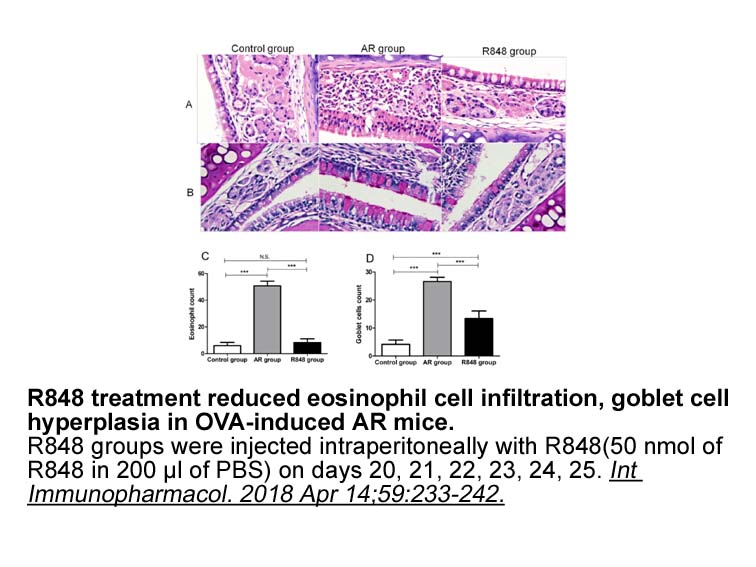Archives
br Non cyclic nucleotide EPAC regulators
Non-cyclic nucleotide EPAC regulators
Despite the success of 007 as a tool molecule, few studies to date have led to the identification of further EPAC-selective agonists. The most studied and controversial group of small-molecule EPAC regulators are the sulfonylurea (SU) family. SUs (Table 1) such as tolbutamide were originally characterised as antidiabetic drugs capable of binding and regulating SUR1, a regulatory component of the KATP channel present on pancreatic β cell membranes [91] (Figure 2). Activation of SUR1 is able to potentiate insulin secretion through the opening of KATP channels, causing potassium-regulated calcium release and increased insulin vesicle exocytosis [91]. Most SU effects within pancreatic β WM-1119 synthesis are attributed to regulation of this pathway; however, various additional low-affinity SU receptors have also been postulated [92].
The impaired response of β cells isolated from EPAC2−/− mice to SUs led to the suggestion that EPAC2 may also be a low-affinity SU receptor [93]. To test this hypothesis, a range of SUs were screened in a cell-based fluorescence resonance energy transfer (FRET) assay for their ability to produce conformational changes in the EPAC2 molecule. Using this assay it was discovered that various SUs promoted a decrease in FRET detected in MIN6 β cells expressing an EPAC2 FRET sensor [93]. Moreover, introduction of EPAC2 into EPAC2−/− mice restored the ability of cAMP and the SUs glibenclamide and tolbutamide to produce significant increases in the cellular levels of GTP-bound active Rap1. Controversially, a separate study [94] pointed to earlier reports that SUs promote increases in intracellular cAMP, which may also explain the observed FRET effects [93]. This highlights the limitations of FRET-based EPAC activation assays; namely, reduced FRET activity is related to conformational changes, which may not necessarily be associated with changes in GEF activity. Definitive evidence for EPAC2 agonism by SUs therefore remains to be shown. However, it is clear from existing data that a proportion of SU activity can be attributed to EPAC2 in vivo[95].
EPAC antagonists
The fluorescent properties of the fluorescent cAMP analogue 8-[2-[(7-nitro-4-benzofurazanyl)aminoethyl]thio]-cAMP (8-NBD-cAMP) have been used to identify EPAC-selective inhibitors. For example, Tsalkova and colleagues tested the ability of 14400 diverse s mall molecules to compete with 8-NBD-cAMP for binding to EPAC2 [96]. This screen identified several EPAC-specific inhibitors (ESIs) with the ability to specifically inhibit EPAC activity in vitro and in vivo independently of PKA 97, 98, 99.
ESI-08 was the first inhibitor to be characterised and was observed to inhibit both EPAC1 and EPAC2 activity at 25μM in the presence of equimolar cAMP [100]. Chemical modification of the R2 cyclohexyl group to cyclopropyl and cyclopentyl moieties yielded further analogues, HJC0198 and HJC0197, respectively, which display improved IC50 values in 8-NBD-cAMP competition assays compared with the unmodified ESI-08 [100]. Furthermore, both analogues were able to inhibit 007-induced protein kinase B (PKB/AKT) phosphorylation in HEK293T cells expressing EPAC1 or EPAC2 [100]. Confusingly, despite the ability of HJC0198 to block EPAC2-mediated AKT phosphorylation in vivo, it was unable to affect EPAC GEF activity in vitro, suggesting potential off-target effects [101].
ESI-09 was identified as a further compound capable of regulating both EPAC1 and EPAC2 GEF activity [97]. EPAC1 expression levels are higher in cancerous pancreatic cells [102]. Consistent with this, targeted siRNA knock down of EPAC1 within these cells inhibited both their migration and their ability to adhere to glass coverslips in response to 007-AM stimulation. This suggests that EPAC1 may play an important role in the invasive characteristics of pancreatic cancer that can result in metastasis [102]. Interestingly, preincubation with ESI-09 was able to mimic the effects of targeted knock down of EPAC1 on cell migration, wound healing, and cell adhesion, indicative of a bona fide effect of ESI-09 on EPAC function and a potential avenue in the treatment of pancreatic cancer [97].
mall molecules to compete with 8-NBD-cAMP for binding to EPAC2 [96]. This screen identified several EPAC-specific inhibitors (ESIs) with the ability to specifically inhibit EPAC activity in vitro and in vivo independently of PKA 97, 98, 99.
ESI-08 was the first inhibitor to be characterised and was observed to inhibit both EPAC1 and EPAC2 activity at 25μM in the presence of equimolar cAMP [100]. Chemical modification of the R2 cyclohexyl group to cyclopropyl and cyclopentyl moieties yielded further analogues, HJC0198 and HJC0197, respectively, which display improved IC50 values in 8-NBD-cAMP competition assays compared with the unmodified ESI-08 [100]. Furthermore, both analogues were able to inhibit 007-induced protein kinase B (PKB/AKT) phosphorylation in HEK293T cells expressing EPAC1 or EPAC2 [100]. Confusingly, despite the ability of HJC0198 to block EPAC2-mediated AKT phosphorylation in vivo, it was unable to affect EPAC GEF activity in vitro, suggesting potential off-target effects [101].
ESI-09 was identified as a further compound capable of regulating both EPAC1 and EPAC2 GEF activity [97]. EPAC1 expression levels are higher in cancerous pancreatic cells [102]. Consistent with this, targeted siRNA knock down of EPAC1 within these cells inhibited both their migration and their ability to adhere to glass coverslips in response to 007-AM stimulation. This suggests that EPAC1 may play an important role in the invasive characteristics of pancreatic cancer that can result in metastasis [102]. Interestingly, preincubation with ESI-09 was able to mimic the effects of targeted knock down of EPAC1 on cell migration, wound healing, and cell adhesion, indicative of a bona fide effect of ESI-09 on EPAC function and a potential avenue in the treatment of pancreatic cancer [97].